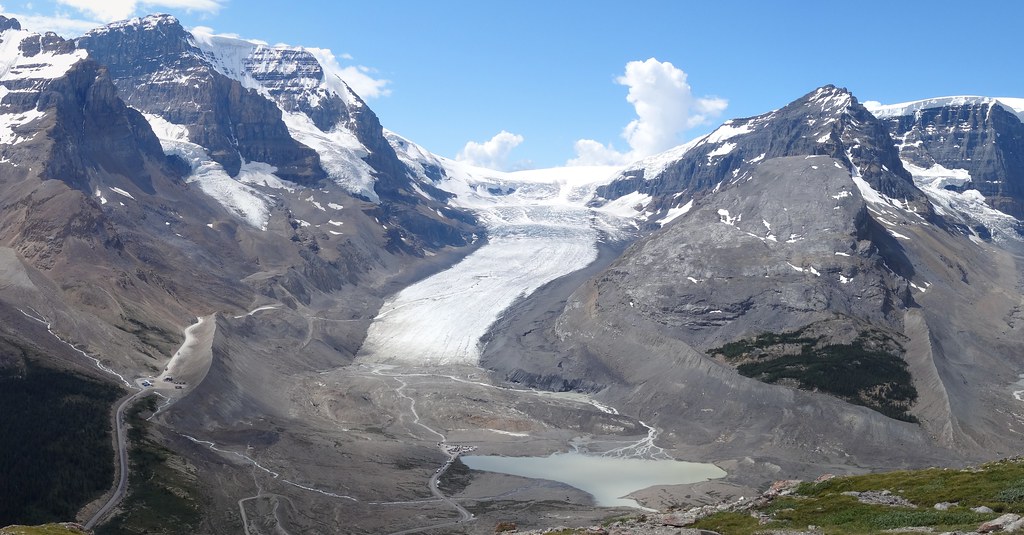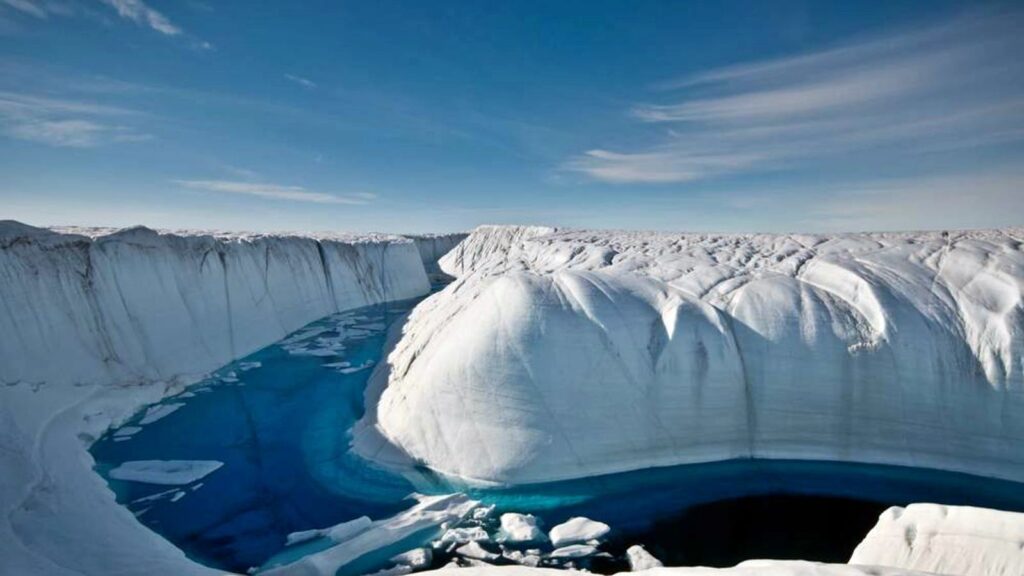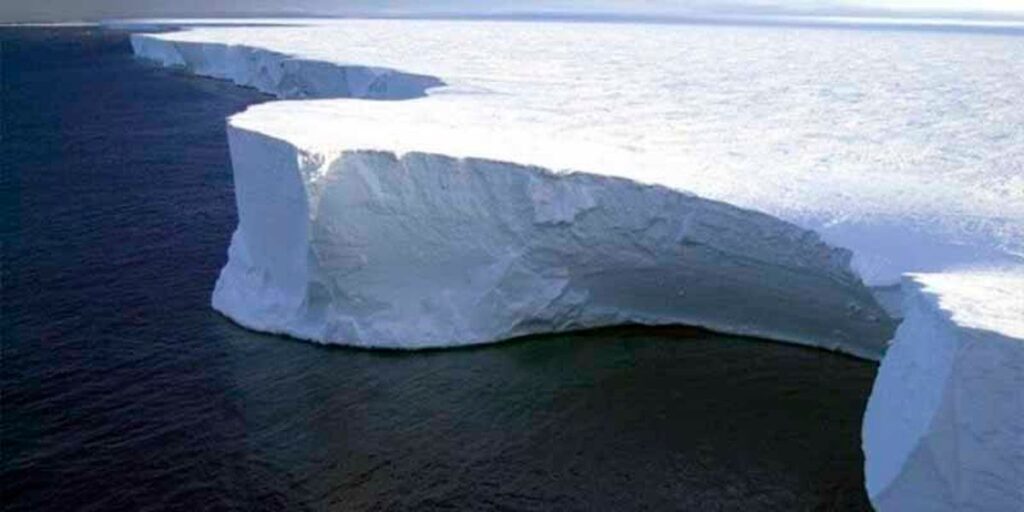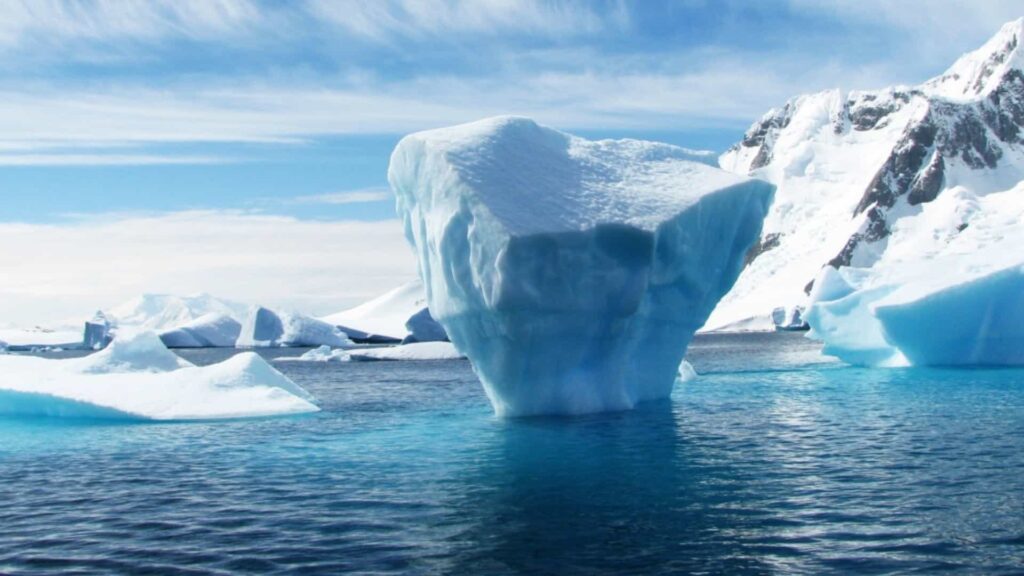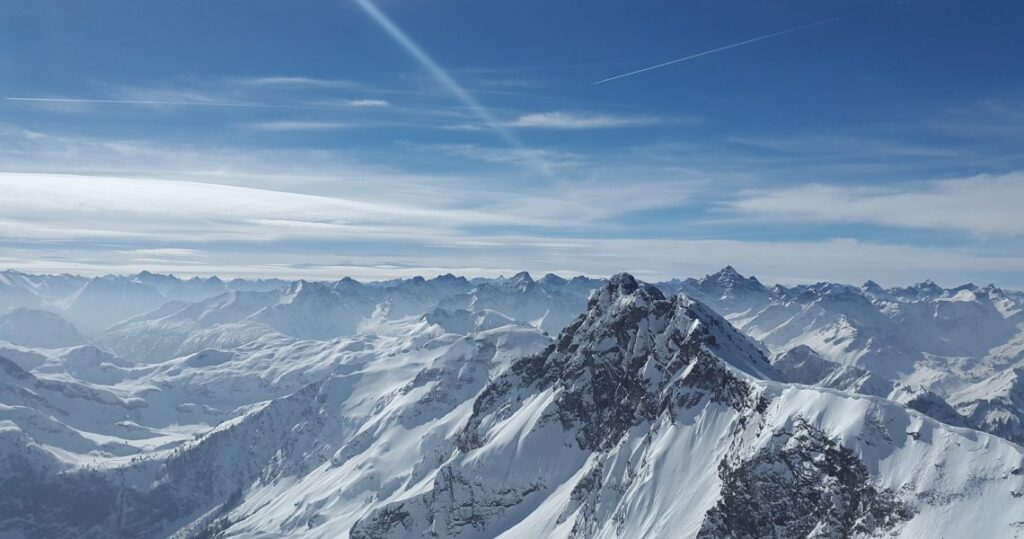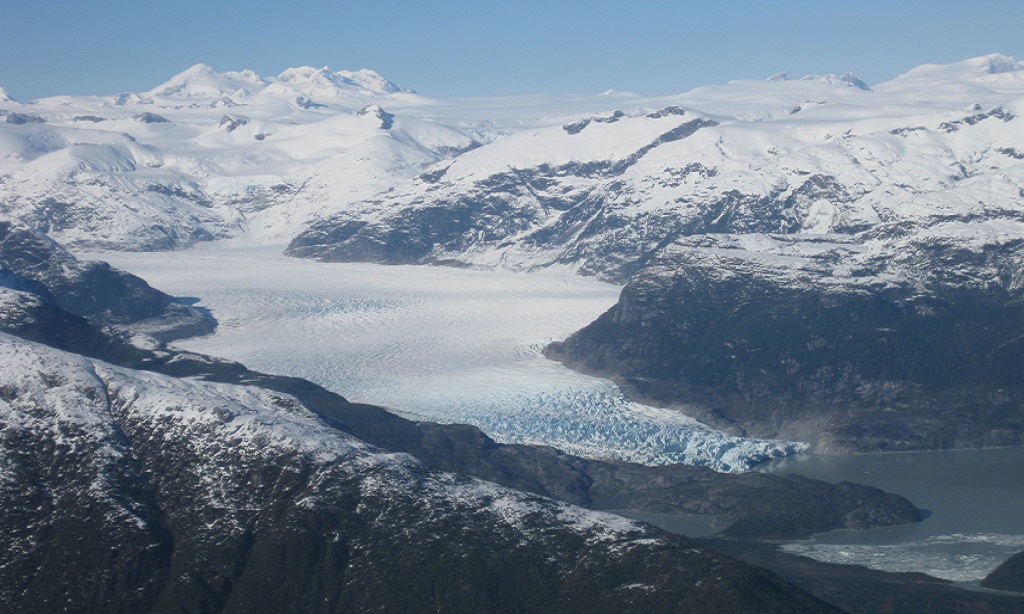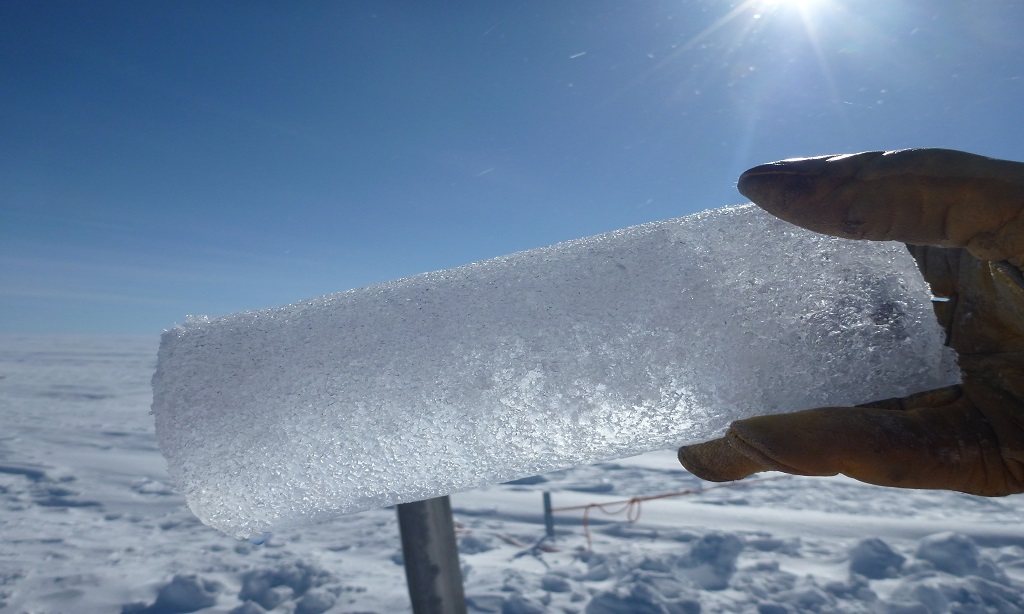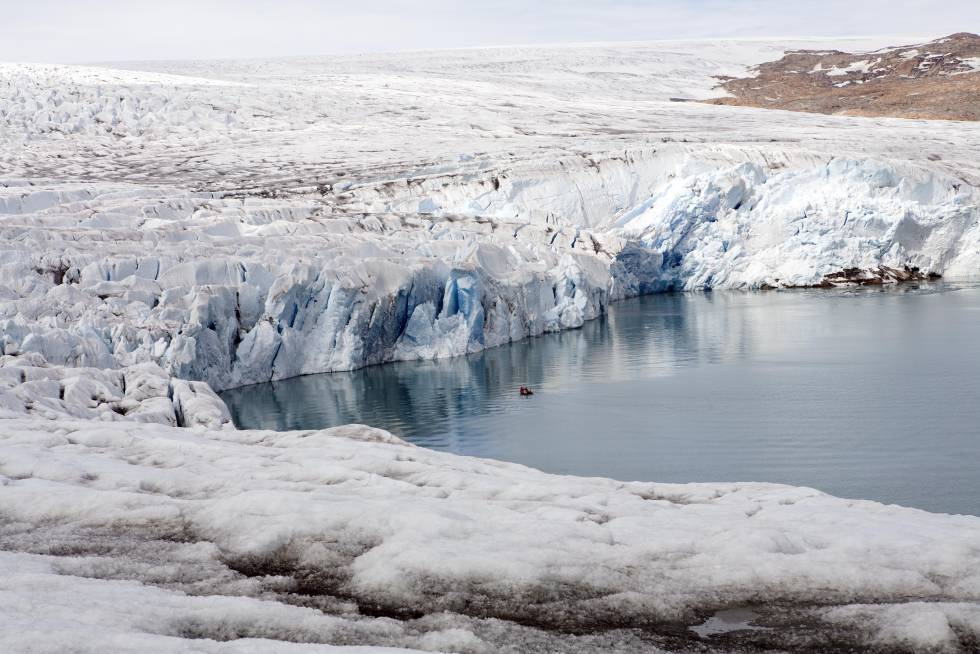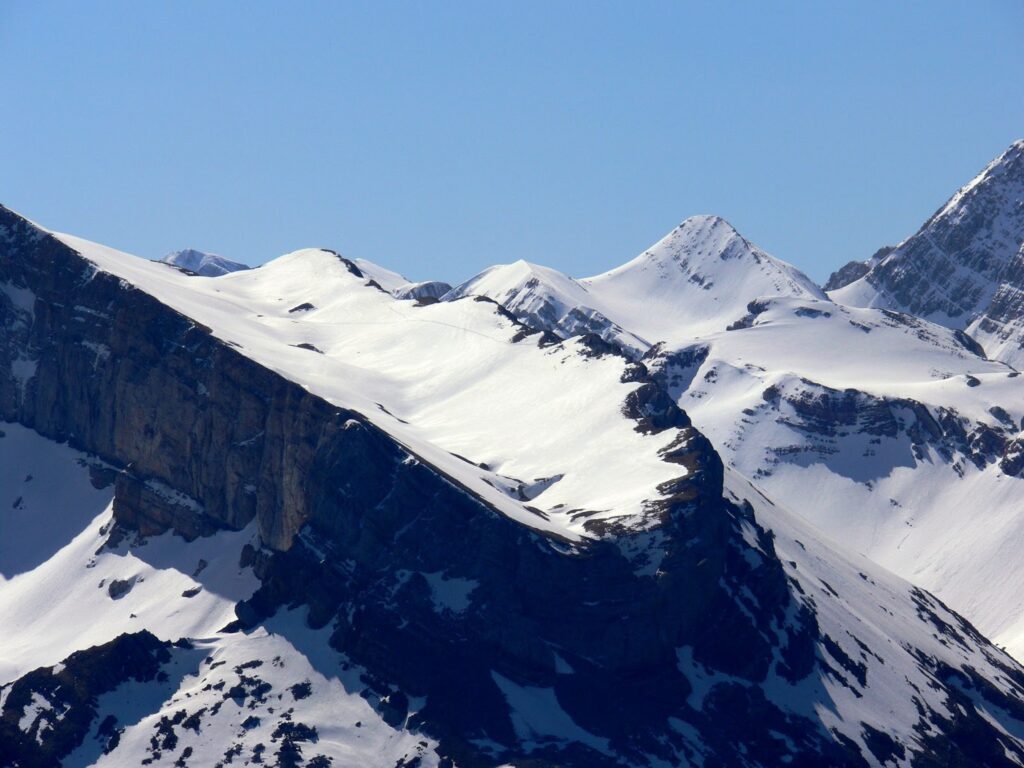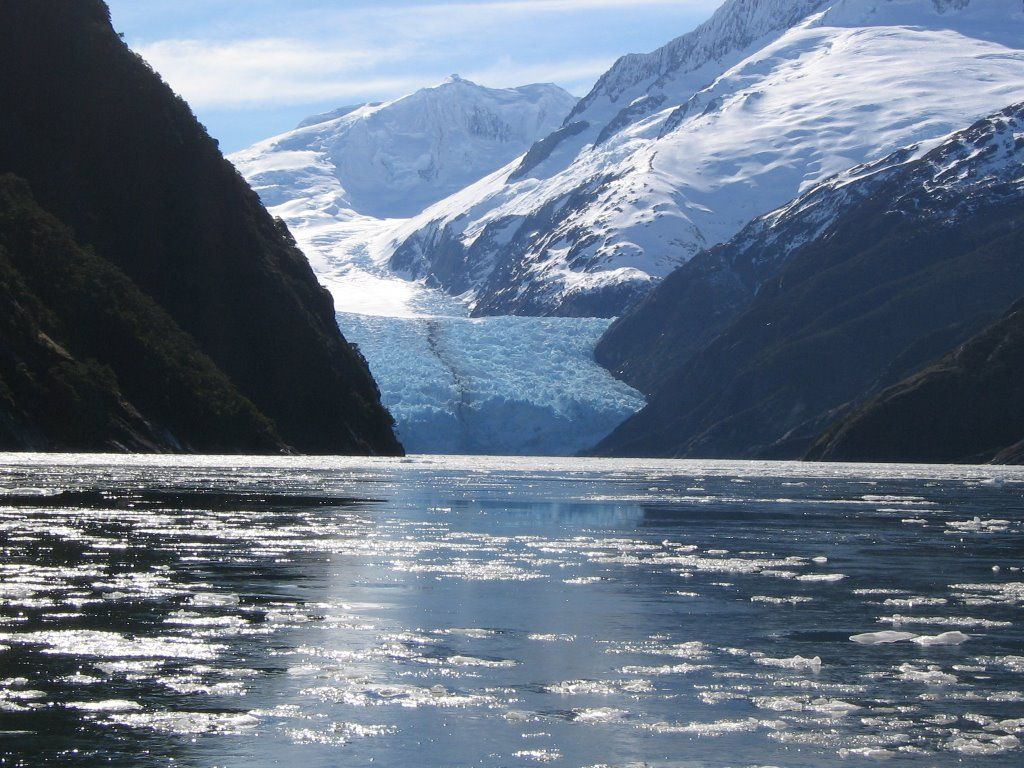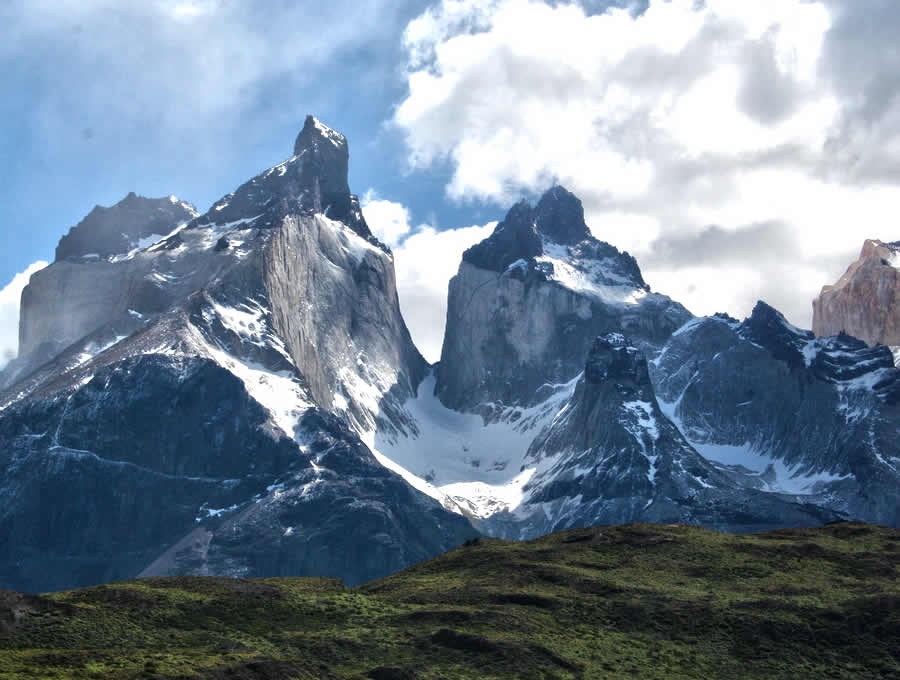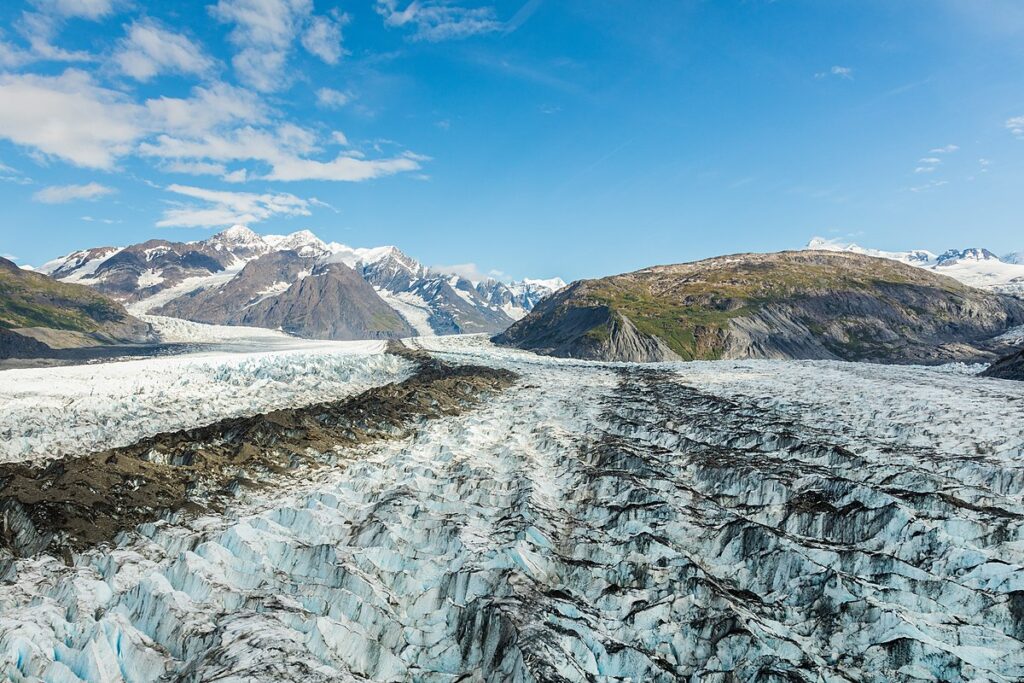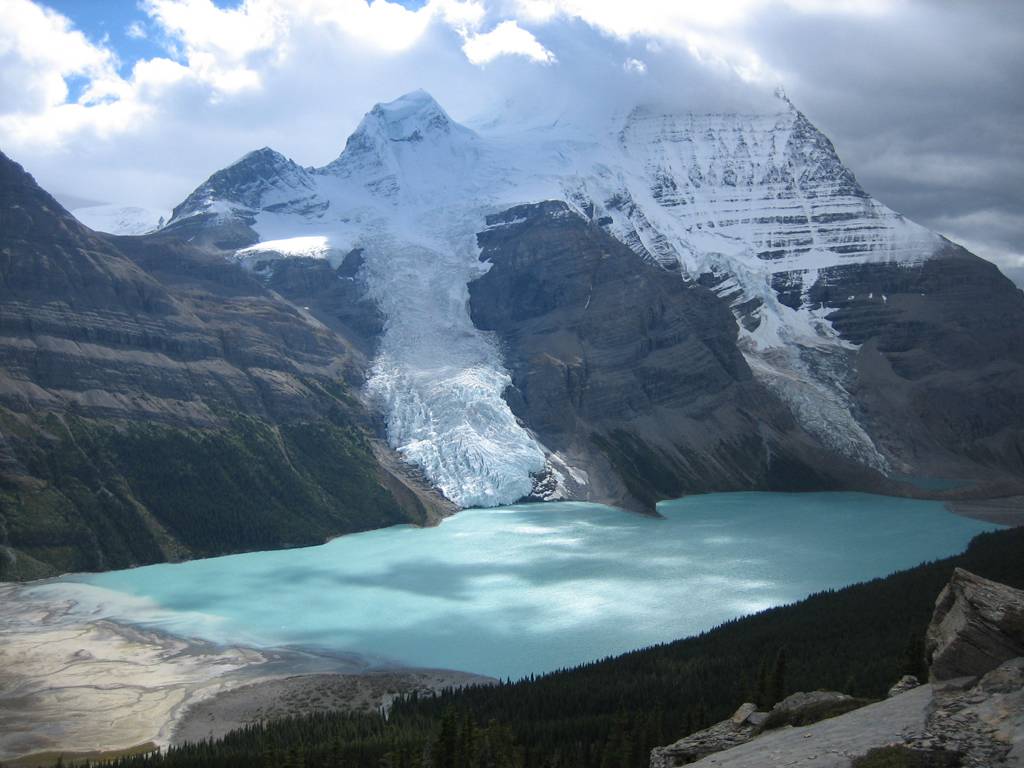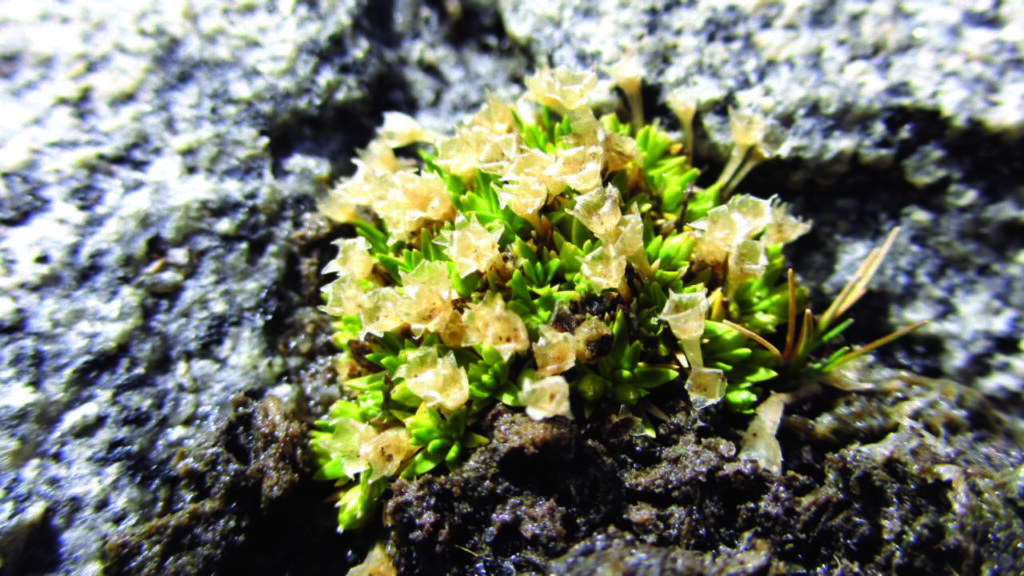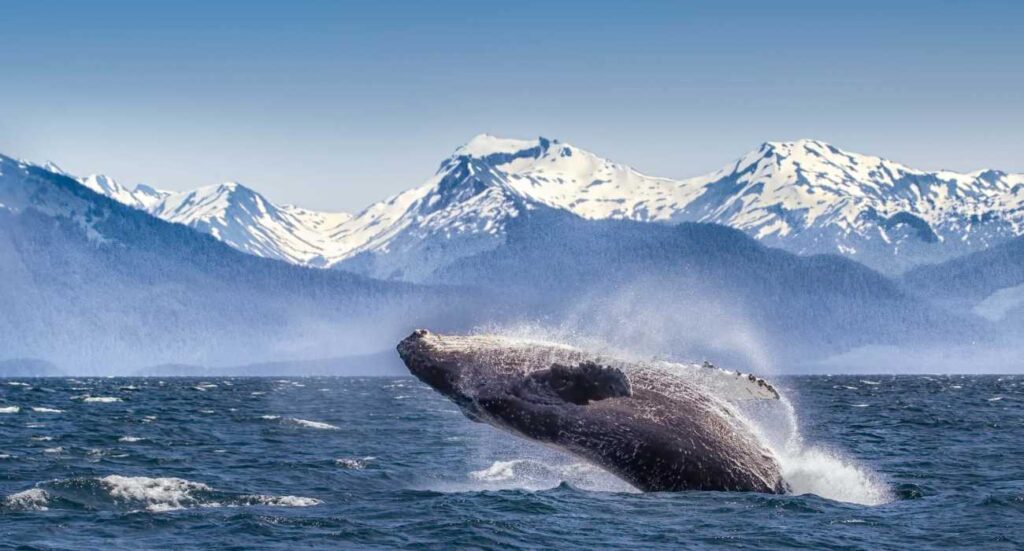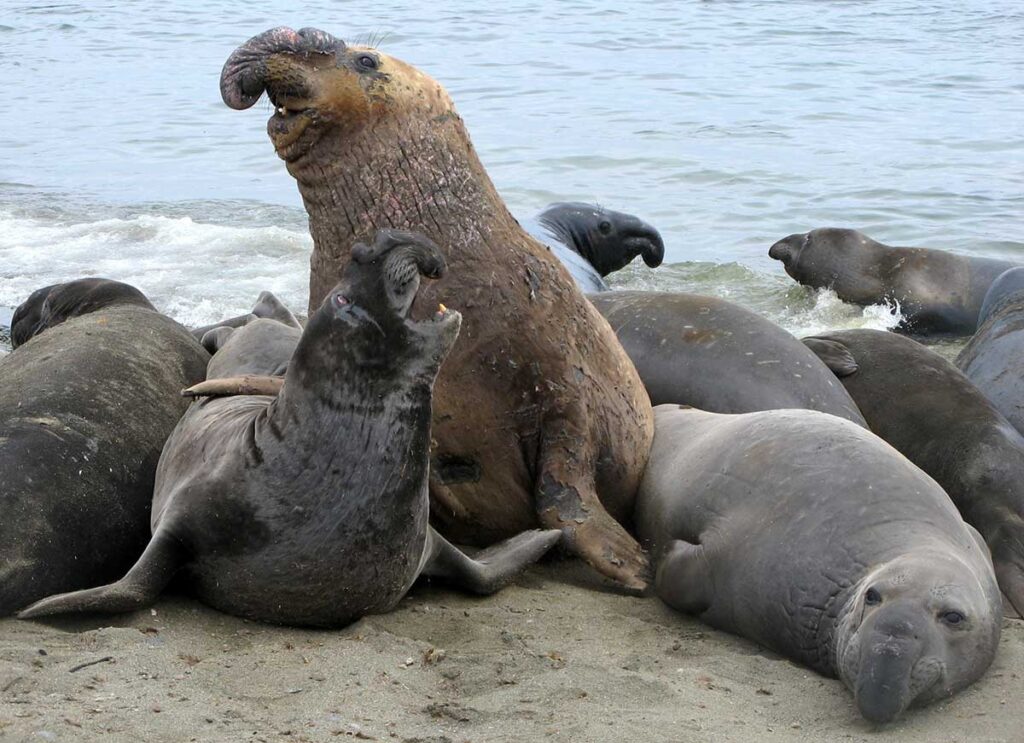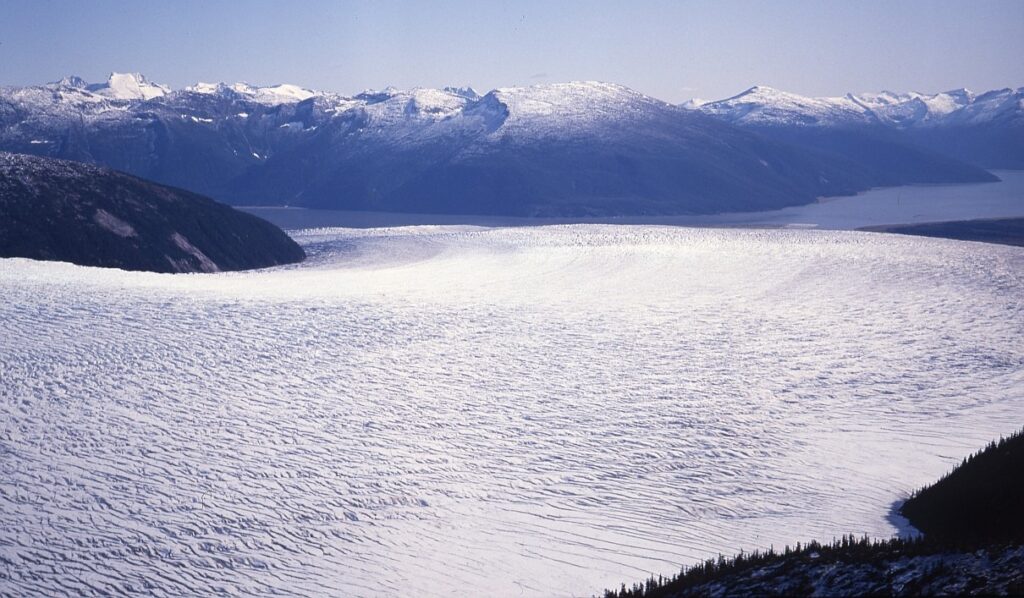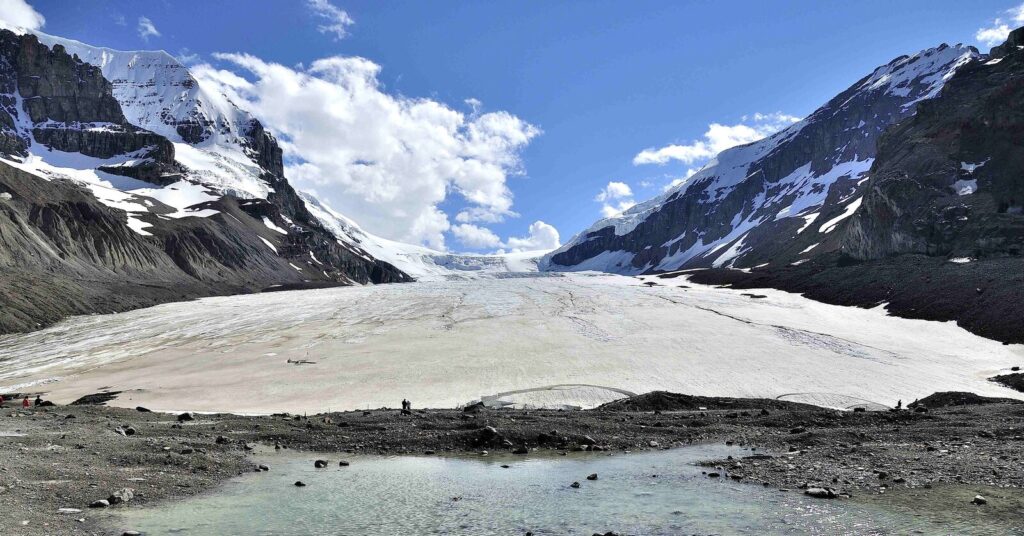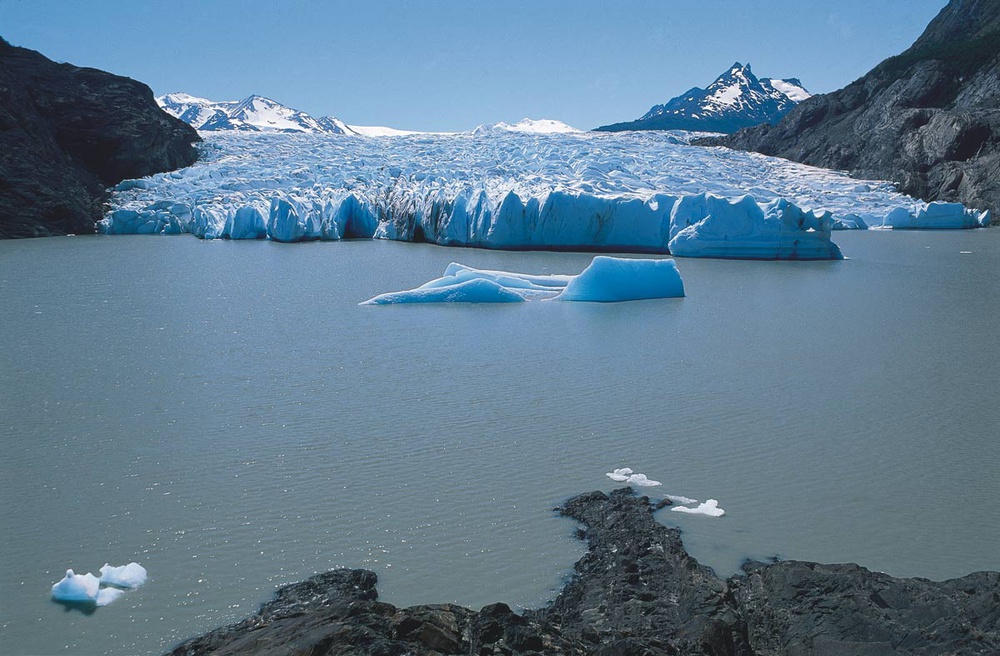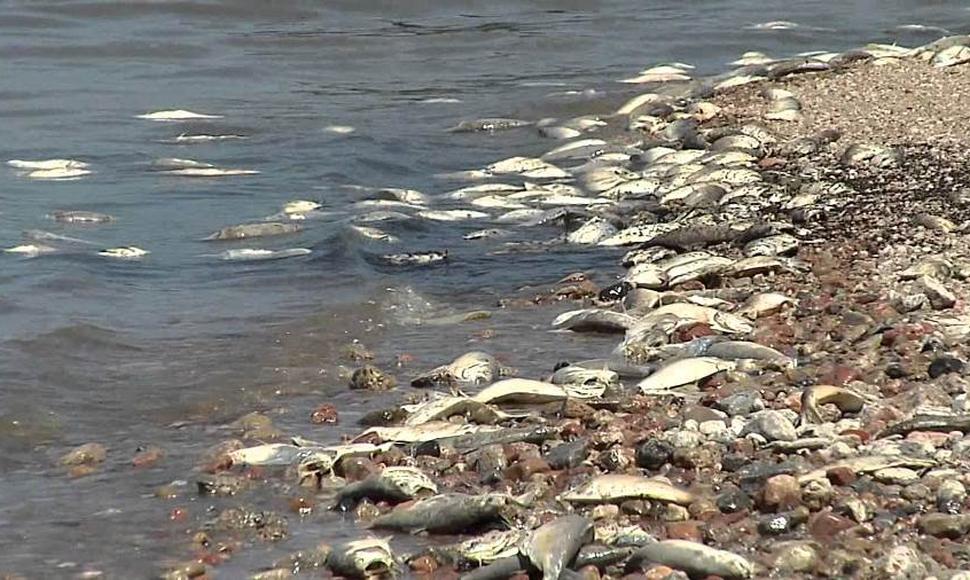The glaciers that take thousands of years to consolidate, currently and due to climatic changes, they are undergoing great transformations. Here you will find all the information you want to know about glaciers, what are they? What are their characteristics? and much more
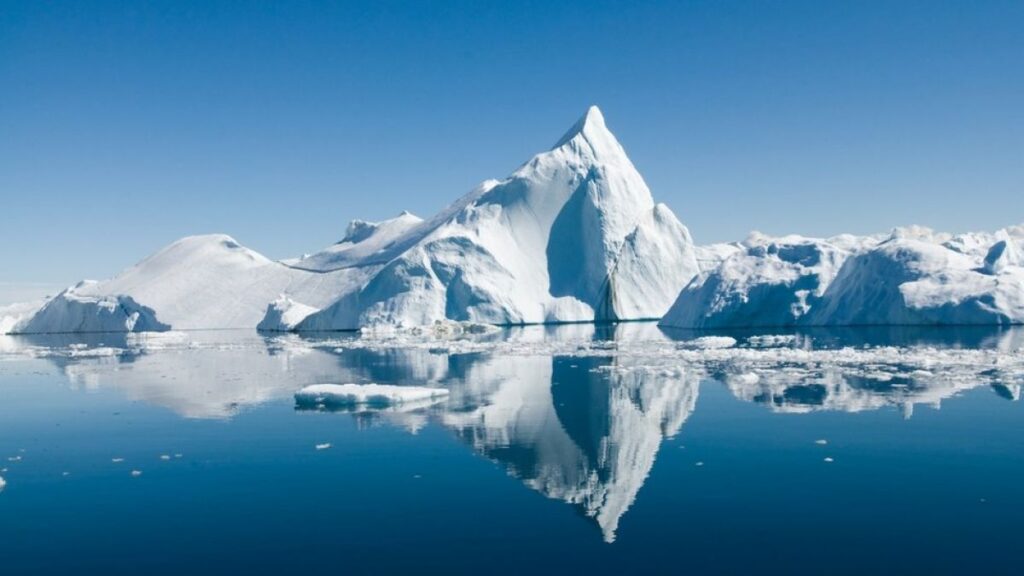
What are glaciers?
Glaciers are solid bodies of ice on the earth's crust and are the product of the constant accumulation, agglutination and crystallization of snow, leaving a trace of their passage in the environment of their location.
They exist thanks to the accelerated rate of annual snowfall, which exceeds the rate of thawing in the summer season. This is one of the reasons why glaciers are located at the poles of the planet. However, they may form in some mountainous areas.
The rate of growth and the particularities of how they are established over the years, is known as Glaciation. Not all glaciers are the same, sometimes they adopt characteristics of the area in which they are established.
Throughout the Earth, there are ideal zones for their formation and classification. According to their shape, there will be ice fields, valleys, niches, among others. They are also modeled, according to the prevailing climate in the area. Thus, they will be polar, tropical, temperate, hot-based, poly-thermal or cold-based.
Millions of years ago a quarter of the planet was covered with glaciers. Currently, for climatic reasons, that figure is 20% less. Although scientific studies suggest that this decrease in its surface is due to processes inherent to the nature of the ice block.
Fresh water reserves around the world are accumulated in glaciers. The greatest concentration of glacier surface is distributed in areas of the southern hemisphere and the Island of Greenland in the American continent, with an area that easily exceeds ten million square kilometers.
Features
- They comprise a tenth of the earth's crust.
- They can be found in areas near mountain ranges.
- They are part of the remains of the Ice Age.
- The origin of its ice derives from the southern hemisphere and the island of Greenland.
- They are of great importance, for the survival of the human species, flora and fauna.
- They constitute the largest supply of fresh water on Earth.
- The detachment of part of its mass, gives rise to icebergs.
- They are grouped according to their location and can be temperate, polar and subpolar.
What are the parts of a glacier?
It is extremely important to know which are the parts that are part of the structure of the glaciers. In the presence of one of these beautiful formations of nature, it is ideal that they have the necessary tools for their identification.
Below are the different parts of the glaciers.
Glacier circus
It is known as a glacial cirque, the rocky area in the form of a basin and that has a semicircle shape. This is caused by permanent landslides in the accumulation and abrasion zones of the glacier.
These zones correspond to the places where the snow accumulates in greater proportion to the rate at which it melts, in the case of accumulation. On the contrary, the abrasion zone is the one where the speed at which the snow melts is greater than the speed at which it accumulates.
Glacial tongue
They are large bodies of ice that come down from the mountains due to the effect of gravity. This downward movement causes large quantities of rocks to be dragged from the mountain slopes in its path.
This rock movement defines structures at the foot of the slopes, which are called moraines. That they are nothing else, that chains of glacial material without compacting.
Ablation area
The ablation zone is the place where the greatest snow and ice wear occurs. These significant mass losses are due to the melting of the ice or the change from solid to gaseous state, that is, due to the vaporization of the glacier.
All these processes bring with them the contribution of masses of water to existing rivers, lakes and oceans.
moraine
As the glaciers move, the ice blocks cause erosion in their path. The remains of dislodged material merge with the ice and are transported by the glacier.
There are four types of moraines and each of them is mentioned below.
- Side: they can be found at the ends of glacial tongues, caused by the contact of the ice with the edges of the walls in its displacement.
- Central: It is the product of the fusion of two lateral moraines, which break off from different glacial tongues.
- Background: its origin is due to the detachment of sediments from the bottom of the glacier.
- Terminal: They are the waste produced by the advance of the glacier. It is located in the final part of the glacier, at the moment the thread begins to melt and loss occurs due to the evaporation process.
Formation of glaciers
Glaciers are formed in those regions of the Earth, whose accumulations of snow between one winter season and the other, is above the processes of fusion, evaporation and sublimation, which is the same as saying the transition from solid to gaseous state.
This process has a series of stages that must be fulfilled, before the glaciers are consolidated. These stages are:
- Snow storage.
- Compaction
- glacial ice formation
Glaciers are a complex system of events and like any system, they need a balance. The glacier balance is the disparity that occurs between the gains and losses of the glacier mass.
The entire process of consolidation of the glaciers can be compared to the calculations of statements of accounts, of personal economic balances. That is, when the balance is negative, surface area is lost in the glacier and when the surface increases, then it is said that there is a positive balance.
On the other hand, glaciers must find a balance point to stabilize their mass. When, due to an accumulation of ice, the glacier gains mass, it is known as accumulation, on the contrary, if it loses it, it is called ablation.
There are different ways in which a glacier reaches the accumulation of more, among them we can mention:
- Freezing of water.
- Action of the winds, when transporting the snow.
- Snowfall, directly on the glacier.
- The frost.
- Avalanches that carry snow and ice.
glacial ice formation
Glacial ice occurs in areas where the rate of snow accumulation exceeds snow thaw. Producing that the lower layers are compacted by the effect of the weight exerted by the upper layers.
That the accumulation of snow in the upper layers of the glacier can generate ice is mainly due to the processes of agglutination and transformation. These processes are affected by the amount of heat and the relative humidity of the formation zone.
In regions of the southern hemisphere, where for climatic reasons the integration process is very slow, the agglutination stage occurs slowly. For this reason, the formation of glacial ice can take hundreds of years.
The ice crystals are subjected to great pressure, these forces produce such great transformations that they cause changes in the mobility of these enormous masses of ice.
According to the climatic conditions of the region, where the glaciers are located, it will affect the extension of each one of them. And all, thanks to the balance that occurs between the material accumulated on the surface of the glaciers and the amount that melts.
Glacial ice formation in terra firma regions, the addition of material occurs on the surface of the glacial mass. However, such mass gain is thanks to the creation of frost.
The frosts are the product of the transformation of water vapor, until they are present in a solid state. And this phenomenon is who makes the contribution of material to the glaciers and not the snowfall.
Glacier classification
Glaciers can be classified in several ways, but the most common are: according to their temperature and their appearance or external structure. Next, each one of them is mentioned.
according to temperature
Among the varieties of ice present in a glacier, the tempered one is distinguished, it is distinguished from other varieties of ice, since it is at heat levels, in which others would melt. There is also the category of ice, whose temperatures are below the degree of fusion.
The subcategories of glaciers, according to temperature, are described below:
temperate glacier
The temperate glaciers are distinguished from the rest, since they are located in areas of medium and low altitudes. In addition, the temperature of its entire mass is very close to the melting temperature.
subpolar glacier
They are those glaciers, which in the interior of their mass maintain temperatures close to melting, but in the external zones they remain with relatively low temperatures.
polar glacier
They are within this category, those masses of ice, whose temperatures are well below the melting point. The high pressures to which they are subjected, from below and on the surface. It encourages the water content to remain frozen.
Carry out the following imagination exercise: close your eyes and imagine that you are on a very high mountain and the cold is unbearable. They offer you a cup of cup with boiling chocolate, do not be afraid to take large sips, since at high altitudes liquids reach a boiling point of less than 100 ° C.
This previously described classification is for reference. Since these natural formations constitute quite complex systems and can vary significantly from one region to another. They are also influenced by temperature and altitude.
According to external form
Each of these ice structures has its particularities. Neither resembles the other, neither in size, color and shape. The most used classification is the following:
alpine glacier
In this category are the smaller glaciers, located in the valleys of the Mountains. For this reason, they are also known as valley or alpine glaciers.
They have an average accumulation of snow, quite high and its displacement is less than 70 meters per month.
ice cap
They are characterized by the presence of large stratifications of ice, which can cover the mountain ranges. The mass of these ice giants is lower than those found in continental glaciers.
overflow glacier
This type of glacier is fed by ice caps and ice tongues. They can be located in the lower part of the valleys, distant from the great masses of ice.
They owe their shape to the movements that are generated in the caps, from the high mountains towards the sea.
continental cap
Of all the glaciers, these are the largest. They can easily recognize it, because they are extensive surfaces of ice, which undergo transformations due to the surrounding environment.
Some areas of the southern hemisphere and the island of Greenland are the only places where there are continental glaciers. Becoming large reservoirs of fresh water.
Plateau
The plateau glacier, has a small surface, are very similar to the cap. They can be found in some large mountains and on plateaus. They are characteristic of regions of Iceland and in the Arctic Ocean.
Piedmont
Piedemonte glaciers are characterized because they settle on low-level land. Their base is quite wide, and they are the product of the convergence of two alpine glaciers.
The largest piedmont glacier is located in Alaska and is about 5.000 km².
outlet glacier
It is the type of glacier that is responsible for modeling the base of rocks, on the glacier bed. The flow of these masses is very similar to river currents, they travel long distances at high speeds. Producing significant changes in the areas through which they travel.
hydrological resources
Because glaciers are made up of large masses of frozen water, they are included as part of the hydrological cycle or water cycle. That is why they are considered water reservoirs, coming from the rains.
In these ice bodies, more than 70% of the fresh water reserves of the planet are contained. The origin of the water from the glaciers comes from two sources, namely:
- Product of thawing snow and ice.
- Thanks to the rain.
The internal structure of the complex water communication system of glaciers is quite complex. It has filtration or percolation vessels, caverns, fissures and corridors through which the water circulates.
The water resource has deposits within the glacial mass. Having these structures makes it possible for you to always have your own reserves and not depend on climatic changes to supply yourself.
The glacier supplies come from:
- Snow.
- Firn, which is an intermediate material between snow and ice, left over from other seasons.
- Fissures or crevasse.
- Lagoons.
The internal hydrological cycle of glaciers is generally activated in the summer season, when the incidence of sunlight is greater and large water losses occur.
In the case of temperate glaciers, the loss of water is through thawing and which in turn filters until it reaches the firn. This exchange of water between the different layers of the glacier does not continue its journey because the last layers are impermeable.
glacial erosion
This type of natural formation can also cause erosion in the environment where they are located. Rocks and sediments are incorporated into the glaciers, coming from the friction and sliding of rocky materials and other dissolved particles.
start
As the glacier emerges, through the fractured bedrock, part of the materials found in its path are incorporated into the ice block.
The erosion of the land, occurs when the water product of the thawing, sneaks between the fissures of the rocks and a recrystallization of the water takes place.
As the water freezes, the rocks near the glacier expand and break. Constituting part of the total mass of the glacier.
Abrasion
Erosion by abrasion occurs due to the sliding of rocky material, which as it passes molds the sides and accumulates at the base of the glacier.
The effects on the relief after having suffered an erosion process, are some marks on the rocky surfaces, called glacial striae. These striations are caused by the sharp points of loose rocks during erosion.
erosion rate
The speed at which the modeling of the glacier occurs, due to erosion, depends on some factors that are mentioned below:
- Glacier displacement speed.
- Ice density.
- Degree of hardness of the rock, which is displaced by the glacier.
- Erosivity of the acting agents of the glacier.
Relief modification
There are many factors that affect the transformations of relief and landscapes. These modifying agents range from water, winds and in some circumstances the ice of the glaciers can act.
glacial valleys
The glacial valleys without the modeling action of the glaciations, would have an inverted triangle shape, so characteristic that it originates from water erosion.
But thanks to the fact that during the glaciations the mountainous valleys suffered a widening and part of their vertical had great losses of rocky material, they adopted the shape of a horseshoe, with which it is known today.
From this whole process of transformation arise the suspended valleys, which are structures that emerge, once the glaciers begin their withdrawal or retreat protocol.
The cracks that were produced by the effect of detachment and abrasion are compensated by materials from the Paternoster lakes, which are born from the terminal moraines.
In the upper part of the glaciers, there are structures called glacial cirques. The circuses are shaped like a cylindrical container, whose walls are somewhat uneven.
The glacial cirques are the ideal place for all the ice that is produced to end up accumulating. Initially they can be seen as irregularities on the sides of the mountain. But later, its density is increased by the fixation of the ice.
Once the glacier begins its thawing process, the cirques become occupied by lakes called Tarn. These lakes may be due to walls that form the moraines, both terminal and lateral.
hills
The hills are other modifications of the relief, product of the action of the glaciers. A pass is born from the separation between two glaciers, which is between their cirques and was eroded to create a pass or gorge.
Fjords
These structures are shaped like very deep coves and are formed by the effect of the flooding of the valleys that have been modeled by the action of the glacier. They are shaped like a horseshoe and the lower part of it cannot be seen, since it is underwater.
In addition to the transformations that glaciers cause in mountain systems, these modifications also occur in a single mountain. Such changes in these types of circumstances are called edges and horns and are mentioned below.
edges
The edge is the product of the expansion of the cirques, as a result of the detachment of rocky material and the effect of ice. The circus in this type of formation is not inside a circle. It is located at one end of the line that divides them.
glacier horn
These are horn-shaped, like the edges, they are also a consequence of the dragging of rocks and other particles when passing ice and snow.
The cirques that form on the edges of a mountain, is what gives rise to these transformations in relief, due to the passage of glaciers.
mackerel rocks
This type of relief modifications are caused by the transit of the glacier through the rocks. Causing them to take on shapes with smooth-edged bumps.
Such is the power of abrasion of the glaciers when they pass through the hills, that in their wake they leave slopes with soft edges, which keep on their surface the direction that the current of the glacier took.
drumlins
The drumlins are small hills, which have quite smooth slopes and their shape is very similar to a sleeping cetacean. They originated from the periods of glaciation.
Along with these structures, the remains of the moraines can also be seen. For this reason, they are also considered as an extension of these, at the bottom of the glacier.
glacial stone deposits
In the ablation area or zone of ice and snow loss, large amounts of water are produced. This water, as it moves away from the glacier, drags enormous amounts of sediment in its path.
As long as the speed of the water current is high, the finer sediment particles are left behind. But as the speed of the current begins to slow down, the coarser sediments begin to settle to the bottom and branches of that water current form.
This erosive process of the relief, originates two new structures, according to the place where it originates. If it occurs on a cap glacier, it is called an alluvial plain. Whereas, if it develops in the mountain valley, it is called the valley train.
Deposits in contact with ice
As the glacier loses mass for various reasons, the flow of ice stops. The water currents produced by the thawing, pass through the different channels that have been formed over the years, leaving traces of the debris.
This thawing process reveals the large stratified deposits, which take on the most varied forms, including:
- hills.
- cumulus clouds
- Terraces
It is these formations, which are given the name of deposits in contact with the ice.
The hills that take the form of prominent hills, are also called kames and are nothing more than structures that originate with the thawing of the glacier, depositing sediment remains in the inner part of the glacial block.
It is also very common to find kame terraces at the ends of a valley, as long as glacial ice has occupied that valley.
Another formation by deposits in contact with the ice, are the eskers. These are deposits in the form of steep irregular ridges, whose conformation is based on gravel, sand and other materials.
Glaciers and natural resources
Although it seems impossible, in these inhospitable places there is also life. Each of the organisms and microorganisms have had to genetically adapt in order to survive and multiply.
Flora
The plant species that live in these areas have developed endless adaptations, many of which have taken thousands of years. These genetic rearrangements are what allow us to live in extremely severe climates.
Ecologically, the flora of these remote places are classified into two large groups: those that could adapt to life on land and those that evolved to settle in the water.
land plants
They are of terrestrial habits, they develop on rocks, soil and stones, which for different reasons, are not covered by snow and ice.
flowering species
In these glacial regions, only two types of flowering plants can survive. That is, they have well defined roots, stems and leaves. These are the Antarctic carnation and the Antarctic grass.
The Antarctic carnation, when the climatic conditions are quite favorable, develops small white flowers.
To enhance their ability to survive, they have been associated with areas protected by moss communities.
lichens
Of all the plant species that reside in glacial areas, lichens are the best adapted to inclement weather.
Its capacity for adaptation and resistance is also due to the fact that it is the product of a symbiotic relationship between an algae and a fungus.
They settle in areas of rocks or stones that have not been covered by ice or snow.
Mushrooms
They are small micro and macroscopic species, among which there are more than 60 species. The largest species grow among the mosses, while another group lives below the ground.
Moss
They are generally small organisms, whose height does not exceed two centimeters and have creeping habits. They are nothing like the rest of the plants, since they do not have specialized tissues to carry all the sap to maintain themselves from one place to another in the plant.
Fauna
The animals of these cold areas were forced to adapt their eating habits, body fat and fur in order to settle in these places.
Polar Bear
Of all the bear species on Earth, it is the only one whose fur is as white as the landscape where it is found. Their diet consists of the consumption of meat, especially that of seals.
He has developed transformations in his hind and fore limbs, to be able to walk and swim long distances. Its ears and tail are not large, which facilitates the preservation of body heat.
Unlike the other bear species, the polar bear does not hibernate. However, when the females have been fertilized, they tend to look for a place to shelter during the winter season.
arctic fox
This animal species is also known as polar fox. It has quite small ears and its hair cover is white, to be able to camouflage itself in the environment.
To stay active during the winter period, it migrates to different areas to find its prey, which consists of small birds and mammals.
arctic hare
The hare of the poles, are among the animals that have been able to adapt to the extreme conditions of the polar areas. Its natural habitat is located in the cold areas of Greenland.
The fur of these animals is white during the cold winter, but if they move to other warmer areas or with the arrival of summer, their hair turns pale blue.
Their diet basically consists of the consumption of vegetable shoots, tender leaves and some strawberries.
Seal
Of all the species of seals that exist on the planet, not all of them tolerate the harsh glacial cold. One that has been able to modify its body to adapt is the Greenland seal or Harp seal.
The adult specimens have a silver-colored skin layer, the face has black shades and a dark spot on the dorsal part. While their young, the fur turns a yellowish white.
In general, they can be found grouped in colonies, where they can shelter each other.
Whales
Although there are many species of whales in the oceans of the planet, the whales that spend the longest time in these cold waters is the Greenland whale.
The body of these cetaceans are quite large, their dorsal fin compared to other species is quite large. They can reach a length from head to tail of about 20 meters and weigh about 100 thousand kilograms.
Their diet is based on krill and they can consume large quantities of these small animals, just by opening their mouths while swimming. Their migratory habits are quite short.
penguins
It is a sea bird, but it does not have flight habits. They are animals that adapted very well to be able to withstand low temperatures. The inability to fly is compensated with swimming skills.
Thanks to the fact that they have wings provided with bones and their body is fusiform, they can reach high speeds underwater and travel greater distances more easily.
The ability to resist the inclement cold is achieved, thanks to the multilayers of their plumage and the fat they retain in their body.
Walrus
It is a marine mammal, native to the arctic regions. The thickness of their skin and the accumulation of fat allow them to withstand the cold of the glaciers. Their diet basically consists of eating molluscs, fish and small animals.
sea leopard
This marine animal does not usually form a colony, it remains alone for most of its life. Except in the breeding season, which has an approach to females.
They measure an average of 3 meters and weigh more than 300 kilograms. They feed on birds, other species of seals, krill and hunt penguins. They are quite violent animals.
Elephant seal
They are large mammals, they can measure up to 5 meters and weigh 4 tons. The skin of these animals is quite thick and the accumulation of fat in their epidermis makes it easier for them to overcome the intense cold of the glacial areas.
They can be easily recognized, because the adults have, on the front of their heads, a kind of trunk quite similar to that of an elephant. Their diet consists of capturing birds and other seals.
Incredible glaciers, curiosities and more
Despite the fact that climate change hits these fragile ecosystems, they can still enjoy their beautiful landscapes and all the living beings that make life in them.
Perito Moreno Glacier
This beautiful glacier is located between Argentina and Chile, in the also famous Cordillera de los Andes. Within the fascinating aspect of this natural formation, the constant advance of its ice surface stands out, which causes a piling up, fissure and detachment of enormous ice bricks, from its façade whose width is more than 5000 meters.
In 1947, due to its constant progress, it crossed the Los Témpanos channel and was able to touch a part of the Magallanes peninsula. After this event, she stopped the flow of water from Lake Brazo Rico.
This phenomenon that occurs due to the advance of the Perito Moreno, causes the level of Lake Brazo Rico to increase more than 20 meters. This causes immense pressures in the dike that it forms, giving way after a certain time and causing great detachment of ice.
This spectacular and unique phenomenon on the planet occurs every four years. It is so fascinating that thousands of tourists come to the place to watch the show.
But you may be wondering how to get there? Well, simple. At the Perito Moreno Glacier Park, you must hire a tourist guide service so that you can enjoy this beautiful phenomenon without any setbacks.
But if you are one of those who love to schedule your outings, you just have to take route 11 from El Calafate and travel a few kilometers through the Magallanes Peninsula.
As advice to preserve these beautiful landscapes as virginal as possible, is to respect the recommendations given by the park rangers.
Taku Glacier
The capital of Alaska is Juneau, which can be said to be an island, which is surrounded by mountains. Behind all that mountain range are the Juneau Ice Plains, and much of this frozen plain is in Canadian territory.
Part of this ice surface gives rise to an important group of glaciers, among which the Taku glacier stands out, in the extreme south of the city. It is considered the largest area in all of Alaska. And until very recently, it was considered the most advanced glacier.
The Taku Glacier is the thickest and deepest of all the other glaciers on Earth. It is approximately 1,5 kilometers thick and 55 thousand meters long.
Recent scientific studies reveal that this glacier entered a retreat phase, as has happened with the Alaskan glaciers. Due to the special characteristics of its mass, it had resisted the ravages of the climate.
In a not too distant time, a process of detachment of large ice bricks will most likely begin. Causing a collapse in the navigation channels of merchant ships, cruise ships and boats for passenger transport.
Mer de Glace
On the slopes of the Mont Blanc massif is a magnificent French town called Chamonix. It is an ideal place to enjoy snow sports, thanks to its strategic location in The Alpes.
But it is also the starting point to visit the glacier ice sea or Mer de Glace. It is the longest glacier in all of France, approximately 7000 meters long and more than 0,4 kilometers thick.
If you want to visit this natural wonder, you have to get to the little red train station in the town of Chamonix. This route takes them up a kilometer ascent, between the French Alps and the journey takes about 30 minutes.
Before arriving at the next station and being fascinated by the beautiful landscapes. During the ascent they have the option of being able to enjoy some beautiful landscapes that have no waste.
In addition to enjoying the Mer de Glace glacier, you can also dare to visit the ice cave. It is a structure that was naturally formed, but that does not detract from its beauty.
How to get to the ice cave?
They must take a train at the Montenvers station and enjoy the route and the landscapes that nature offers. Upon reaching the end of the route, they must board a cable car that takes them directly to the cave. It will be an unforgettable experience!
Athabasca Glacier
The surface of this huge piece of ice is about 12 km2. It is nestled between large mountains, among which Mount Athabasca and Snow Dome stand out. It is also accompanied by Mount Andromeda and Wilcox Summit.
The Athabasca Glacier encompasses the valley regions, all the way to the Columbia Icefield. This area, are vestiges of the golden years of the Ice Age. The glacier is in constant movement, up to 2 centimeters daily.
If you visit the Athabasca Glacier, you can't help but admire the beauty of the ice field. In addition, many tour operators are on site to offer guided walks throughout the glacier.
This natural formation is part of the Jasper National Park, which opens its doors between May and October, for the enjoyment of all its visitors. The staff in charge of the park, offer all the necessary information for a better enjoyment of the glacier.
They can practice hiking, since theme parks were arranged along the entire route for the enjoyment and knowledge of hikers. They can also enjoy the beautiful scenery of the lake and the waterfall.
In all of North America, the Athabasca is the most frequented glacier, due to its easy access. You can get there from Jasper and also from Banff and via Highway 93, from the ice fields.
It is important to keep in mind that visits to the park should not be made without the presence of a certified guide. This to protect their lives, due to the risk of accidents.
Jökulsárlón Glacier
This glacial lake, no matter how many hours pass, will not stop leaving you paralyzed before so much beauty, formed by the ice blocks. They will be surprised by some playful seals and by the dance of the Icebergs.
The National Natural Park was created in 2008, with the idea of also promoting the ice masses that join the other glaciers: Vatnajökull, Skaftafell and Jökulsárgljúfur.
The most special attraction of the park are the icebergs. These come off the big blocks, they can spend floating in the water, up to 60 months before reaching the Jökulsá river.
The Jökulsárlón glacier has an area of 25 thousand m², a depth of 300 meters. He is a young man among all the glaciers, since he is barely 80 years old.
In these beautiful landscapes, locations were inspired for the films:
- Tomb Raider, in 2001.
- James Bond, in 1985 and 2002.
- Batman, the beginning.
- Frozen.
- The Game of Thrones series.
There are multiple recommendations so that you can make the most of your visit to this beautiful place. Among those that can be mentioned consider the time of year in which they will travel, the duration of the stay, among others.
- Visits should be scheduled one per day, so that they can enjoy the landscapes, without the stress of time.
- If you travel to Iceland in the summer season, you will get an additional bonus in hours of sunlight. Since it is the time when the sun remains more radiant hours.
- On the contrary, if they decide to travel in the winter season, they will not be able to enjoy the beauties of the lake. At this time ships cannot sail.
gray glacier
It is located within the Torres del Paine National Park. The simple fact that they visit Gray Lake will be quite a spectacle. It is always full of icebergs floating everywhere.
If what you are looking for is to boost your adrenaline, you have to get on a boat and have the joy of being as close as possible to the walls of these magnificent blocks of ice.
No place you have visited before compares to what your eyes will be able to see when you arrive at this beautiful glacier. The fissures that form in the block describe precious and unrepeatable lines.
They have an intense blue color that captivates those who see it. They are magical, they transport you to remote places, making you forget everything around you. They fill you and connect you, with the energy coming from the center of the Earth.
In order to get to the Grey, they have to set sail on a boat from the Puerto Natales pier. They can also be accessed by land, but nothing compares to traveling by boat.
Once the boat docks at the Gray Lake dock, they have to cross the suspension bridge over the Pingo River. With the sway produced by the winds, many of the tourists experience horrible vertigo.
On the other side of the bridge, they will find a beautiful wooded area and a spectacular pebble beach. A few minutes into the walk you can see Gray Lake, with its dance of small blocks of ice.
Jorge Montt Glacier
This spectacular glacier has an area of 460 km2 and is in a process of retreat of more than 20 meters per day. Because it flows directly into the sea, it is considered a maritime glacier.
Those who visit this spectacular landscape can enjoy exciting adventures, being in contact with nature. To access the glacier, visitors must kayak, and then climb the hills to the viewpoints.
In order to reach it, you must take the road to the Tortel cove, ending the Carretera Austral, in Chile. The journey by road is approximately 100 kilometers. But it is well worth making this tour.
Uppsala Glacier
This glacier is counted among the great glaciers of the Argentine region. Its surface covers a valley, which is fed by a group of glaciers and is located within the Los Glaciares National Park, in Argentina.
Who is in charge of its discovery, was the geologist born in Sweden Klaus August Jacobson, at the beginning of the 20th century. When he was in the company of the Argentine biologist Francisco Pascasio Moreno, who is popularly known as the Perito Moreno.
The glacier is 54 kilometers long, placing it third among the longest in South America.
To get to the glacier, they must make a boat trip from Lake Argentino. From where you can enjoy beautiful landscapes covered with icebergs.
If you visit this region of Upsala, don't forget to bring along your cameras and film equipment. Hats or visors, sunscreen, appropriate clothing according to the season in which they visit.
The Crown Glacier
Glacial systems are part of the cryosphere and Venezuela hardly has one of these beautiful landscapes. The La Corona or Humboldt Glacier is located in the Sierra Nevada of Mérida state at an altitude of 4940 meters above sea level.
This glacier melts at a fairly rapid rate, if this trend continues this beauty of nature can quickly disappear. Making that country the first in South America to run out of a glacier.
The Humboldt peak is counted as the second highest in Venezuela. Its winding peaks shelter a group of the five that still survive in the mountains. These are the Corona and Sievers glaciers.
The rest of the glaciers are smaller and are located on Pico Bolívar. These formations, because they are located in tropical mountainous formations, are more likely to disappear, thanks to the greenhouse effect.
Getting to the Corona Glacier is quite easy. It can be accessed through the Mucumbary cable car system, in the Mérida state, or by land, crossing the Merida moor.
For those who love extreme adventure tourism, they can ascend the peak with a group of tour guides that depart from Parque la Mucuy, in the town of Tabay. This tour lasts three days.
The route is through the cloudy forest, passing through Laguna Coromoto, Laguna Verde, until reaching the top of the peak. All this under the guidance of experts who will make you enjoy this magical tour to the fullest.
Importance of glaciers
The ice found on the surface of glaciers acts as a protective layer. It is responsible for protecting the earth's crust, the seas and the oceans.
These ice caps are responsible for acting as large reflectors, which repel high temperatures into the stratosphere, keeping the planet in a pleasant climate.
The formation of glaciers is millions of years. The record that scientists have made, regarding the movements and retreats of these large blocks of ice. They allow estimating what changes have occurred in the climate.
They are part of a large reserve of fresh water, of the entire planet. A tenth of the planet is covered by these large masses of ice and most of them are located in the southern hemisphere.
When glaciers enter periods of thawing, they contribute large amounts of water to ocean currents. These are modified in temperature, speed of their currents and in the levels of their waters.
How does melting glaciers affect sea level rise?
The melting processes of the glaciers directly affect the elevation of the levels of the Caribbean Sea and the rest of the seas. This also results in a greater impact on the coasts, due to water erosion.
The surfaces of the glaciers of Antarctica and Greenland are the ones that contribute the most water to the seas and oceans, due to their thawing. Currently the thawing speed is higher than the storage speed.
If this trend continues in a very few years, it is expected that the increase in water levels will exceed the retention capacity of some coasts. What will cause the most devastating Natural disasters, all over the planet.
Can the melting of glaciers affect humans and ecosystems?
Everything has a cause and effect. When the balance is lost in one of the actors of the system, it affects the rest of those who coexist in that system.
To the extent that sea ice and glaciers melt, the oceans and seas will suffer a rise in the temperature of their waters. Due to the effect of ocean currents, these high temperatures will travel around all the bodies of water on the planet.
When an imbalance occurs in the climatology of the waters, all ecosystems will be affected, resulting in a decrease in the supply of fishery products.
The reproduction of marine animals will be disrupted and, consequently, also their life cycle. Being able to disappear some species in a not very long period of time.
Many biological niches would be lost, and therefore the food chain of the species, their habitats and ultimately the normal development of life would be lost.

